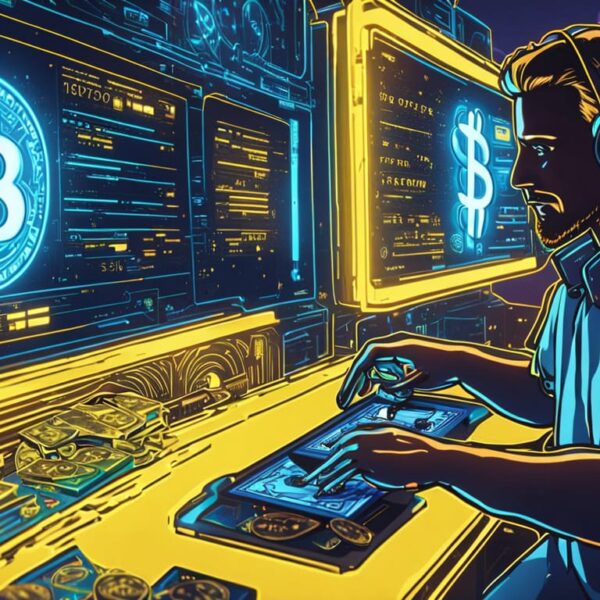Choosing Your Crypto Exchange
Before you can trade cryptocurrency, you need to choose a platform. There are many exchanges, but Binance is the largest by trading volume and trusted by millions worldwide. Its diverse features, reasonable fees, and global reach make it a strong choice for both beginners and advanced traders.
“Just need to register an account with one of the crypto exchanges, spend a little money on your credit card… and then you can get started.”
What to Look for in an Exchange:
- Security record and user reviews
- Fees and supported payment methods
- Range of assets and trading features
- Regulatory compliance and identity checks
Creating Your Binance Account
Step-by-Step Guide
- Go to Binance.com or download the Binance app.
- Click “Register” and enter your email or mobile number.
- Create a strong password.
- Enter a referral code—useful for fee discounts if you have one.
- Verify your account by entering the confirmation code sent to your email/phone.
- Complete identity verification (KYC):
- Upload photos of your ID and, in some regions, a selfie for facial verification.
- Provide basic contact information.
Pro Tip:
Setting up an account on Binance is easier than opening a bank account for most people—and you can often start with as little as $10.
Essential Security Settings
Your crypto is only as safe as your account security. Never cut corners here.
Activate Two-Factor Authentication (2FA)
2FA is a must-have. It requires a second approval (like a code sent to your phone or generated by Google Authenticator) before logins or withdrawals.
Create Strong, Unique Passwords
- Avoid: Birthdays, common words, or reused passwords.
- Do: Use a mix of letters, numbers, and symbols. Consider using a password manager for safe storage.
Set Withdrawal Whitelists
Restrict withdrawals to known wallet addresses. Even if someone accesses your account, they can’t withdraw funds to arbitrary places.
Regularly Review Account Activity
Check for unfamiliar logins or actions. Binance makes it easy to review account history from your security dashboard.
“Use unique, strong passwords and change them periodically. Activate 2FA and withdrawal whitelist features.”
Referral Codes and Fee Reductions
One of Binance’s unique perks is its referral program:
- Enter a referral code when signing up (from a friend, community, or influencer).
- You get 10% of all your trading fees back as a kickback, and the person who referred you gets a bonus too.
- Buying BNB (Binance Coin) and paying fees in BNB gets you an additional 25% off spot trading fees.
- Pro tip: If you didn’t use a referral, you can delete and recreate your Binance account, but you’ll lose trading history and must move your assets before doing so.
“If you signed up to Binance without using any referral codes, you are missing out on trading fee kickbacks… use it together with paying for fees with BNB, and you get to save a total of 35% on fees, which is significant if you trade often.”
Understanding KYC
KYC (“Know Your Customer”) is a legal requirement for all major exchanges. Binance will ask for:
- Legal identity docs (passport, national ID)
- Address verification
- In some cases, proof of income or selfie video
This protects you from fraud and allows larger deposits/withdrawals.
Binance: Web vs. Mobile Experience
Web Interface:
- Larger screen for charting and analysis
- Easier navigation for order history, reports, and advanced trading tools
Mobile App:
- Buy/sell in seconds, ideal for trading on the go
- Access to basic features, notifications, and pricealerts
“Remember to spend time to understand the trading interface. There are many features and will take you hours and hours to get comfortable with it.”
Protecting Your Funds: Wallets 101
While most beginners use Binance’s built-in wallets, it’s essential to know the basics:
- Binance Custodial Wallets: Binance controls the private keys. Convenient but less secure if you want full control.
- Personal Wallets: You hold your own private keys. Options include mobile apps, hardware wallets (like Ledger or Trezor), and browser wallets (e.g., MetaMask for DeFi exploration).
Best practice: Trade with what you can afford to lose, and move large or long-term holdings into private wallets for safekeeping.
Quick Start Checklist
| Step | Completed? |
|---|---|
| Registered a Binance account | ☐ |
| Enabled 2FA | ☐ |
| Set a strong password | ☐ |
| Entered a referral code | ☐ |
| Completed KYC | ☐ |
| Bought a small amount of BNB | ☐ |
| Explored both mobile/web apps | ☐ |
Key Takeaways:
- Start on Binance for ease, features, and volume.
- Secure your account from day one—use 2FA, strong passwords, and withdrawal whitelists.
- Maximize your savings by entering referral codes and using BNB for trading fees.
- Understand and complete KYC early for seamless trading.
- Practice safe habits by learning about wallets and keeping only what you need on the exchange.
You’re ready to fund your account and make your first trade. Let’s dive in!



Leave a Comment